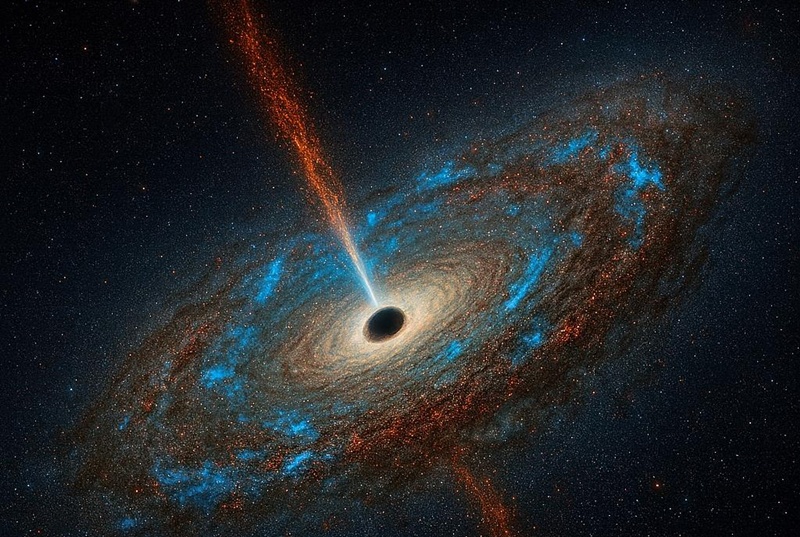
Shown is an imagined illustration of a supermassive black hole galaxy. (Korea Astronomy & Space Science Institute)
By Koh Hyun Jeong
The Korea Astronomy and Space Science Institute (KASI) on Oct. 13 said it jointly discovered with an international research team a blue-excess dust-obscured galaxy (blue DOG) that emits a strong blue light despite a black hole at its center.
KASI said it discovered a candidate for an unusual celestial body using the Korea Microlensing Telescope Network telescope, finding the galaxy after follow-up spectroscopic observations using the Gemini South Telescope in Chile.
A galaxy obscured by dust normally glows red, but the discovered galaxy shines in an unusually strong blue. This is because short wavelengths (blue light) like ultraviolet light are scattered by dust, allowing only long wavelengths (red light) such as infrared light to pass through.
The galaxy in question is believed to have existed around 11 billion years ago at a time when galaxies and black holes were most active. Its mass is approximately two trillion times that of the sun and its brightness about 80 trillion times higher.
KASI professor Jeong Woong-Seob, who led the study, said, "This will provide important clues to understanding how galaxies and black holes grew together."
The research results were published on Oct. 10 in The Astrophysical Journal of the U.S.
hjkoh@korea.kr